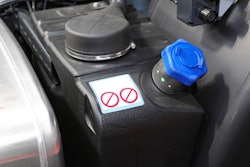“Where are you going to get all the power needed to electrify trucks?”
Great question!
During the high heat of summer for the last few years, ERCOT — the agency governing power distribution in Texas — repeatedly concluded that during increased demand customers should voluntarily cutback electricity usage, issuing warnings about looming brownouts or rolling blackouts.
They also instituted a more creative solution of voluntary cutbacks. ERCOT actually pays a bitcoin mining company in Texas not to use power. Fortune reported on this practice in 2022 and CNBC in 2023, if you are looking for starting points. I expect ERCOT is not alone in this. The agency has also been helping utilities add new power generation and distribution.
The simple truth about the electric grid in the U.S. is anything but simple. More than 3,000 relatively independent utilities somehow work together to provide continuous power to the growing needs of America. Rather, they usually provide it. As demand grows, one solution would seem to be to grow power generation and distribution in the same way that we’ve grown the freeway system: adding more lanes and routes since the 1956 Federal-Aid Highway Act.
The grid has a lot in common with freeways. For example, Interstate 10 through Houston has grown to 14 lanes to try and accommodate demand growth for rush hour periods. But drive on it during off-peak hours and you might only see a few cars. The electric grid is capacity constrained for peak power usage — that time of day when everyone needs electricity. At other times of the day, though, demand for power can be significantly less.
Where the comparison between the electric grid and highways falls apart is that utilities are attempting to balance ongoing power generation with ongoing power demand. Freeways, for the most part, don’t have this challenge, although they are starting to with the use of variable speed limits and market-based variable tolls.
The U.S. grid has been accurately described as the largest machine in the world. Power comes from hydro-electric dams, gas fired turbines, wind farms, solar farms, geothermal wells, nuclear plants, and more. Throw into that the fact that many homes and businesses now have rooftop solar and battery storage. It’s a pretty amazing system that has evolved over nearly 100 years.
It seems simple to just have utilities add more generation and distribution capacity. Throw money at it and expand the supply to keep pace with the peak demand. Only we all pay for that, and like the demanding consumers we are, we want things but don’t want to pay for them.
Utilities try to effect change by managing demand by charging more for power during peak demand periods. They want customers to self-manage by choosing more economical times of day to turn on equipment, or self-regulate by choosing to compromise by, for example, setting thermostats higher during heatwaves to reduce air conditioning loads. Essentially the utilities want to make us do the work of managing loads so they don’t have to. Eliminating demand or moving demand to off peak hours means the utilities don’t have to add any capacity. They can make money without spending more.
The cornerstone of managing your business profitability almost always starts with reducing costs. What is true for utilities also applies to electricity customers. Reducing your demand translates to reduced costs.
Reducing demand falls into two broad categories: elimination and efficiency improvement. Elimination is looking at all your electricity demand and deciding you no longer need some piece of equipment. Perhaps you outsource that and get it off your facility, or it’s just no longer relevant to your operation. Efficiency improvement is reinvesting in newer, better, less energy demanding equipment to do the same job.
Amory Lovins, a founder of RMI, popularized the term negawatts. This is such a catchy term you can even find on Wikipedia and other sites. A negawatt describes energy not used. Let’s say you reduce your site energy use from 100 kWh to 90 kWh, then you have saved 10 negawatt-hours. Your utility bill will be for 90 kWh, but it could have been for 100 kWh, so there is a tangible value assignable to those 10 kWhs not used.
You actually can price negawatts. This is, I believe, how ERCOT rationalizes paying Texas bitcoin miners $31.7 million to not operate during peak demand periods. One source estimated that payments consisted of “$24.2 million from energy sold back to the ERCOT grid and $7.4 million in demand response credits.” This is estimated as slightly more than the bitcoin miners would earn mining bitcoin with that power. We might describe that $24.2M as the value of negawatt-hours on the energy market in Texas during a power crisis. The vast majority of electricity consumers who voluntarily reduced demand to avoid rolling blackouts were only paid back indirectly by having lower kWh charged.
Cutting back usage long term means looking at efficiency improvements. When your facility was built, it immediately became out of date. In car terms, it began depreciating because the technology used has a born-on date. Technology and building standards constantly improve, but odds are your building is not updated as constantly.
There are opportunities to find power inside your buildings because you likely are operating less efficiently than you would in newer facilities. Simple areas to look at are overhead lighting, power management, and air conditioning and heating systems.
Similarly, your trucks have these built-in inefficiencies because they are older than the newest models. It’s a fundamental fact in trucking that new model year trucks typically are more efficient than older ones. One of the easiest ways to reduce your fuel costs is to buy a new truck, often improving by several miles per gallon, according to NACFE research. That savings with newer vehicles is also going to be true with zero-emission vehicles as they mature.
Improving efficiency saves operating costs, reduces your environmental footprint, and likely makes you more competitive. It is a tradeoff between capital costs and operating savings. Think of it as negadollars in operating budgets.
Look just at lighting for your warehouses. Pacific Energy Concepts (PEC), a company based in Washington state that describes itself as an energy optimization company, lists several success stories with companies like Ikea, Costco, Weyerhaeuser, Freightliner NW, and more where replacing aging lighting systems with newer technology both saved money and improved illumination levels. This isn’t chump change. The Costco example includes more than 1,000 projects in 650 locations saving 117,685,864 kWh of electricity. The price of electricity varies considerably, but if you pick a conservative number, say 15-cents per kWh, Costco might be directly saving nearly $17 million dollars. PEC estimates that the equivalent emission savings is 92 million tons of coal not burned.
Another good place to look is the SEER rating of your air conditioning system. SEER is the seasonal energy efficiency ratio of the system – effectively it’s a standard rating for estimating how efficiently electrical energy is used to cool. Higher SEER numbers mean electricity is used more efficiently. The minimum SEER rating for southern homes per the Department of Energy’s regional standards was 10 in 1992, then 13 in 2006 and 14 in 2023. The DOE states, “Even if your air conditioner is only 10- years-old, you may save 20% to 40% of your cooling energy costs by replacing it with a newer, more efficient model.”
The point here is that newer designs for systems generally always have a requirement that they perform better — more efficiently — than their predecessors. That’s why companies employ engineers to make new products.
Investing in negawatts by eliminating unneeded or inefficient electricity loads can help you and your grid to find power in the path to electrify.












